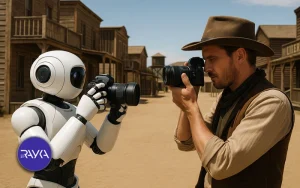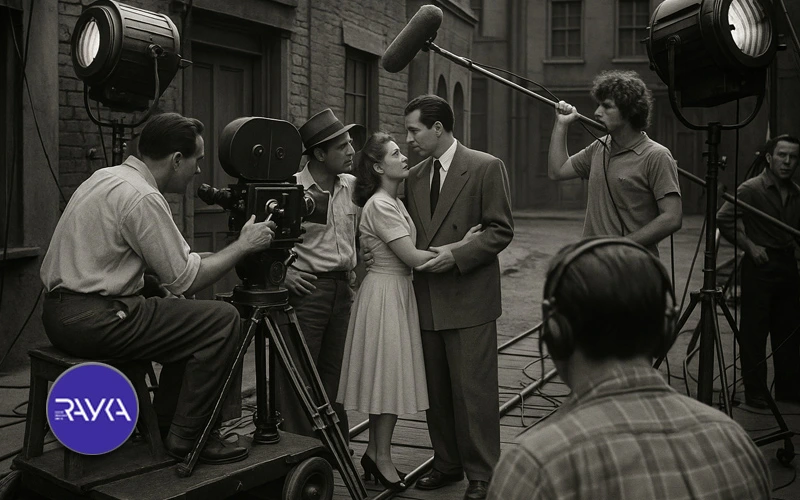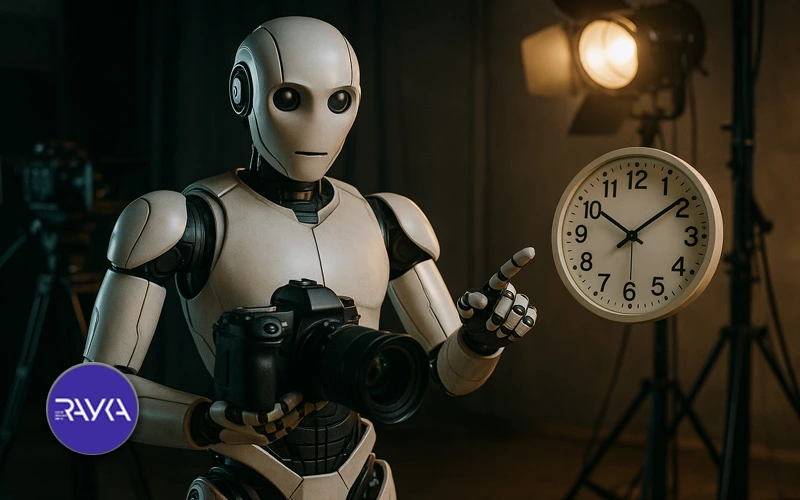
The difference between AI filmmaking and other methods has become a hot topic in the content production industry in recent years. Today, many filmmakers and brands want to understand the advantages of using AI compared to traditional filmmaking. Advanced tools now allow the production of creative films even without professional equipment.
In traditional methods, making a film involves complex stages such as filming, manual editing, and location management. These processes are costly and time-consuming for the production team. AI filmmaking, however, can shorten this long path and offer a more cost-effective option.
Nevertheless, many experts believe that traditional filmmaking still holds a unique place. Understanding the differences helps make better choices for content production or advertising projects. In this article, we examine all these aspects in detail, comparing the advantages, disadvantages, and future of AI filmmaking to make decision-making easier.
AI filmmaking refers to the process of producing video content where algorithms and machine learning models play a central role. This approach allows you to complete scripts, generate images, videos, and even sound using just a few simple commands or descriptive text.
Popular tools like RunwayML, Pika Labs, and Sora have made film production simple and fast for users. With these technologies, there is no need for expensive cameras or costly locations, and you can quickly turn your ideas into real output.
A key difference of AI filmmaking compared to other methods is its accessibility. Even people without specialized knowledge can produce short films or professional promotional videos with just a few clicks.
Traditional filmmaking is a fully structured, step-by-step process that requires coordination among a team of specialists. Unlike AI-based methods, each part of the production in traditional filmmaking is done manually and is usually costly and time-consuming. The main stages of traditional filmmaking are:

Before deciding whether to use AI or traditional methods, it’s helpful to examine each key criterion separately. Here are the main differences between the two approaches in terms of time, cost, manpower, creativity, and flexibility:
Traditional filmmaking may take weeks or months due to team coordination, location rentals, and professional editing. AI filmmaking can deliver the final result in hours or days, which is why many brands are moving toward AI.
Traditional filmmaking is often expensive, including salaries, equipment rentals, and production costs. AI filmmaking is significantly more economical and does not require heavy expenses, enabling small businesses to produce high-quality content.
Traditional filmmaking depends on large teams including directors, cinematographers, editors, and behind-the-scenes staff. In AI filmmaking, many tasks are automated, and a single person can manage the entire project.
Some argue that traditional films still achieve higher artistic quality with more human detail. AI-generated promotional videos and films can be creative and unique but may sometimes appear slightly artificial. The choice depends on the project’s goal, audience, and content style.
In traditional projects, changing parts of a film usually requires reshooting, which is time-consuming and expensive. In AI filmmaking, changes can be made quickly without repeating the entire process, offering much greater flexibility.
AI filmmaking has gained popularity in recent years due to a set of notable advantages:
AI technology eliminates the need for studio rentals, expensive locations, or high-end equipment, reducing overall project costs and allowing even small businesses to produce professional films or promotional content.
AI-based video production models can deliver complete video content within hours. This high speed is a competitive advantage for brands needing rapid campaign production or promotional videos.

In traditional filmmaking, changing a part of the film requires re-shooting and re-editing. With AI filmmaking, any section can be modified quickly and a new version generated, providing high project flexibility.
Many AI tools allow selection of different visual styles such as realistic, cartoon, fantasy, or minimal. This enables the creation of videos that perfectly match your brand identity.
AI tools also allow rapid creation of animated ads without extensive manual labor.
If you are still uncertain between traditional filmmaking and AI, the comparison table below can help. It lists the key features of each method so you can select the best option based on your brand or project priorities.
| Feature | Traditional Filmmaking | AI Filmmaking |
|---|---|---|
| Production Time | Long (weeks to months) | Very fast (a few hours to a few days) |
| Cost | High and expensive | Economical and cost-effective |
| Manpower | Large specialized team | Can be executed by a single person |
| Flexibility for Changes | Low, requires reshooting | Very high and fast |
| Artistic Quality | More human detail | Acceptable, sometimes artificial |
| Variety of Visual Styles | Limited to the team’s skills | Diverse and extensive |
Filmmaking with artificial intelligence is not only a modern approach but also an opportunity to create creative and cost-effective cinematic works. Raikamah, with years of experience in AI-based video and promotional teaser production, is ready to accompany you in the journey of smart filmmaking.
To get started, simply share your idea and script with us. Raikamah’s expert team, utilizing the latest AI tools, will handle all stages of production, editing, and sound design at high quality.
If you wish to produce your feature film using AI, get in touch with us through the form below to receive professional consultation and guidance.
AI filmmaking is currently experiencing significant transformations, and the future of this emerging industry looks extremely exciting. Below, we explore new trends, expert predictions, and the impact of AI on the content production industry.
One of the most important future trends in filmmaking is combining AI with virtual reality (VR). These technologies allow creators to develop fully interactive and immersive cinematic experiences that place the viewer at the heart of the story.
Even mobile filmmaking will be affected by these new technologies, offering independent creators more creative possibilities. The integration of AI and VR expands the boundaries of creativity and will elevate future films beyond simple viewing experiences.
AI has fundamentally changed how content is produced, distributed, and marketed, transforming the content production industry. These changes make the creation process faster, smarter, and more targeted. Key impacts of AI on content production include:
The difference between AI filmmaking and traditional methods is evident in speed, creativity, and production costs. This modern technology enables the production of diverse, high-quality content and has transformed the filmmaking process. As AI continues to advance and integrate with new technologies such as VR, the future of filmmaking will be more creative and exciting. Using these methods allows for faster, more cost-effective, and engaging content production, potentially revolutionizing the film and advertising industries.
Yes, the quality of films has gradually improved with AI technology and is acceptable.
Usually, it costs less than traditional filmmaking, but it depends on the type of project.
Yes, it is possible using the right specialized tools.
With experience and expertise in this field, Raykamah supports you from concept to final production. For free consultation, contact us at 09101053525.